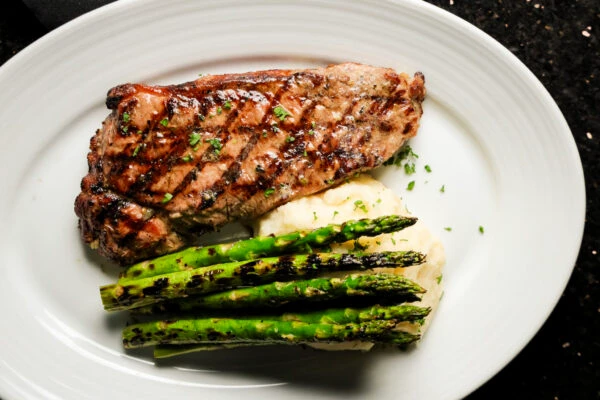How to Grill the Perfect Steak
There’s a quiet magic in grilling the perfect steak. From the moment your cut meets the heat and the first sizzles rise to a meat lover’s ears, to the anticipation of that tender first bite, it’s the perfect blend of juices, seasoning, and the satisfaction of achieving true doneness. A perfectly grilled steak is a simple pleasure, but one that rewards patience, preparation, and a little know‑how. With the right cut, a little seasoning, and the guidance of our steak temps chart, you can grill a steak that’s tender, juicy, and perfectly cooked every time, helping you turn rare attempts into well‑done success.
Choosing and Preparing Your Steak
The process of cooking up the perfect steak begins before the fire is lit. When choosing the best steak for grilling, opt for cuts that shine on the plate and with your audience – popular choices are ribeye, New York strip, sirloin, filet mignon, or a classic T-bone. Marbling, otherwise known as the white threads of intramuscular fat speckled or streaked throughout the meat, melts as it cooks which adds more flavor and juiciness.
Keep in mind that a steak about 1 to 1½ inches thick will give you the best balance of crust and juicy center.
Before you begin seasoning, let the steak rest, at room temperature for 20 to 30 minutes. Resting the meat means letting it sit after cooking so the juices redistribute, the fibers relax, and carryover cooking finishes the meat for a tender, flavorful result. Cold meat can cook unevenly, leaving you with a crusty exterior and a center that hasn’t caught up. Think of it as letting the steak wake up before its moment in the heat.
Seasoning for Flavorful Results
The best steaks rarely need more than salt and a bit of freshly cracked black pepper. Pat the meat dry, season generously, and if time allows, let the salt sit for about half an hour. This step brings out the best of steak’s flavor and encourages that coveted caramelized crust. As an extra touch, you can dust on a pinch of garlic powder, paprika, or a dry rub. The goal is to highlight the steak’s natural richness, not mask it under a veil of other flavors. Before grilling, preheat your stovetop or grill thoroughly and lightly oil the grates with a paper towel and tongs to prevent any of your precious cuts from sticking and help produce those signature grill marks across the surface like a pro.
Grilling to the Perfect Doneness
Grilling a steak is a balance of heat and patience. Start with high, direct heat for about 2–3 minutes per side to sear and develop flavor throughout, then gently move the steak to a cooler zone of the grill or stovetop (indirect heat) to finish cooking evenly.
Use a meat thermometer to check steak doneness accurately and cook it to your preferred temperature
Steak Doneness Temperatures:
- Rare: 120–125°F (cool red center)
- Medium Rare: 130–135°F (warm red center)
- Medium: 140–145°F (warm pink center)
- Medium Well: 150–155°F (slightly pink center)
- Well Done: 160°F+ (little to no pink)
Remove the steak about 5°F before your target as it will finish cooking as it rests.
Resting and Serving
After grilling, let the steak rest a third time for 5–10 minutes before cutting-in. Use your knife to cut against the grain and, if you like, top with a small pat of butter or a sprinkle of thick salt or cracked pepper for a polished finish.
Skip the Work, Keep the Flavor
Some days are perfect for the ritual of grilling. Other days call for the comfort of an expertly cooked steak without the prep or cleanup. At Stanford’s Restaurant & Bar, our culinary team prepares flame-kissed steaks, grilled vegetables, and seasonal favorites year-round, bringing polished-casual dining to your table. Sit back, savor, and let our team handle the heat.

